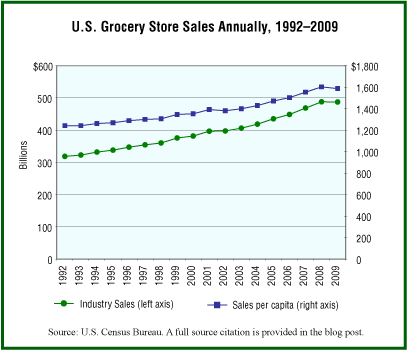Selling computers and software online seems pretty natural, after all, the buyer is using a computer to make the purchase. This may explain why the growth rate of online sales of this line of merchandise was not quite as robust between 2003 and 2008 as the growth rate for other lines of merchandise—clothes, sporting goods, food, beer and wine, and appliances to name a few lines, each with an online sales growth rate over 200%. Selling computers online has been underway since the 1990s whereas online sales of other lines of merchandise have only moved onto the Internet in a big way since the early 2000s.
Geographic reference: United States
Year: 2003 and 2008
Market size: Sales: $7.8 and $14.3 billion respectively, an increase of 84%.
Source: “Table 1055. Electronic Shopping and Mail-Order Houses—Total and E-Commerce Sales by Merchandise Line,” Statistical Abstract of the United States: 2011, U.S. Census Bureau, page 663, available online here in a spreadsheet format, and here as a PDF file.
One word of clarification to help prevent any confusion about just what is being presented here. The data in the source table are provided in two columns per year, the first one called “Total,” and the second is “E-Commerce”. The column headed “Total” refers to the total sales for the industry “Electronic Shopping and Mail-order Houses,” [NAICS 4541], and the second column is the e-commerce portion of that industry’s total. Do not confuse the “Total” column for a measure of total sales of the product line listed in that row. It is, rather, the total sales of that product line made electronically and through mail-order houses.
Original source: U.S. Department of Commerce, Bureau of the Census.
By the way, for anyone not familiar with the Statistical Abstract of the United States, a wonderful compilation of a huge variety of important measures of the United States, learn about it here. It is a great place to start with any investigations about the U.S. economy, business climate, people, government, and many more things yet.

